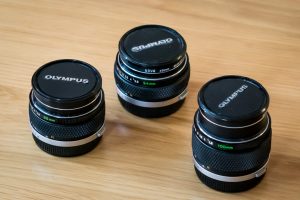The Way We Were – Part 1
Back in the day, I had an Olympus OM system, chosen because it was light and compact. Mind you, that was a benefit which quickly evaporated once a couple of bodies and a few lenses found their way into my bag. I shot with that gear for nearly 20 years, film equipment not experiencing the same levels of rapid obsolescence as we see today with digital. Sure, Olympus eventually introduced the OM-3 and OM-4 but there was never an imperative to upgrade to those from the OM-1 and the, innovative for its time, OM-2 which I was using.
The big change which occurred towards the end of the 1980s was autofocus. Unlike other manufacturers, Olympus largely let that pass it by and, at best, its offerings were half hearted. As a result, the company spent the next decade or so on the sidelines. I fully expected to transition to autofocus with Olympus, but ended up with Canon instead.
The really major technological upheaval a few years on was not autofocus, but digital of course. That represented such a fundamental transformation to the way that images are captured, some manufacturers were unable to cope. They either downsized or left the business altogether. Ironically, the biggest casualty was Kodak. Despite having invented the first digital camera, it could not adjust its business model to take advantage.
Canon had no such issues and, as it had done with autofocus a few years previously, led the way in those early days. So it was I simply switched from a film body to a digital one. For over 20 years I have been a Canon shooter and remain so to this day. That said, my allegiance nowadays is more with smaller and lighter mirrorless models which means my Canon gear comes out less often.
Where digital proved so catastrophic for Kodak, it was a blessing for Olympus. Unlike Canon or Nikon, it did not have cameras designed around an existing mount where it needed continuity to preserve sales. That allowed it to produce the world’s first system designed specifically for digital capture, based on the 4/3 standard it helped to pioneer. After a few years, with the introduction of electronic viewfinders in place of a DSLR mirror, that became the micro 4/3 system we know today. Once again, Olympus is producing small cameras and lenses.
I never got rid of my Olympus gear and for a long while I hoped that the day would come when I could once again use my lenses. They are mainly primes ranging from 24 mm to 100 mm with a maximum aperture of f/2.8, together with a newer 135 f/3.5 lens passed on from my Dad. These days those focal lengths and more can be covered by a couple of pro spec zooms. Each of those prime lenses were amongst the best of their time and in terms of cost would be equivalent to a good quality zoom lens today.
The advent of live view and mirrorless cameras has meant a resurgence in interest in older manual lenses, which are difficult to focus accurately with an optical viewfinder lacking any focussing aids. The recent arrival in my life of a Fuji X-E2 has meant, for the first in the ten years which have elapsed since I last used them to shoot with film, I could once again try my Olympus lenses. All I needed was an inexpensive adapter, which was duly acquired, and I was set.
In a subsequent post, I will document how I got on. Do the lenses perform as I remember and are they worthy of a return to a place in my camera bag? The X-E2 has a number of different methods to aid manual focus and I will also evaluate their effectiveness.
Update
Part 2 of this article can be viewed here.
